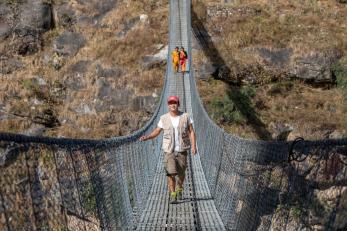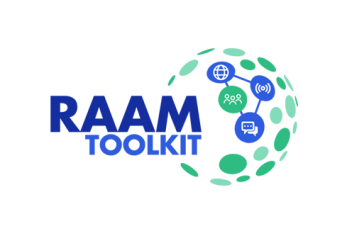The Reduced Access Analytical Methods Toolkit

Download the RAAM toolkit (also available in French, Spanish, and Arabic) ▸
Download the RAAM supporting tools ▸
Watch the recorded webinars
The toolkit is designed for both managerial and technical users, with step-by-step guidance, tools, and resource lists for each method. The interactive downloadable toolkit walks users through the steps of the process and provides links to live, cloud-hosted versions of all supporting tools.
If you are in a low-bandwidth environment or have unstable access to internet, you can also download copies of all supporting tools. The tools in the file are current as of the date marked on the files. Please note that some supporting tools are only available in English, and the zipped file contains all available translations to Spanish, French, and Arabic.
The Reduced Access Analytical Methods (RAAM) toolkit is a practical resource designed to help humanitarian practitioners overcome monitoring challenges in reduced access environments. Reduced access can be caused by natural disaster, conflict, political instability, or other factors, and typically makes it difficult to conduct normal monitoring of program implementation.
The RAAM toolkit offers technical and managerial tools for a menu of analytical methods that can fill information gaps and/or improve data quality during reduced access program monitoring. RAAM supplements (but does not replace) traditional Monitoring, Evaluation and Learning (MEL).

The analytical methods covered by the RAAM toolkit were designed to address commonly-encountered information gaps and data quality issues in reduced access environments. The toolkit covers the following methods:
- Data Triangulation: Systematic comparison of multiple data sources to improve the reliability and accuracy of program data, helping to identify strengths and weaknesses in information.
- Context Mapping: Layering various data sources on a map to understand factors that may impact program activities, such as access changes or conflict trends.
- Rumor Tracking: Monitoring unverified information in communities to identify potential gaps, implementation issues, or early signs of violence, enabling timely interventions.
- Remote Sensing: Using satellite or aerial data to monitor physical conditions and changes in implementation areas from a distance.
- Transaction Analysis: Analysing digital transaction data from cash or voucher assistance programs to understand usage patterns, vendor capacity, and more.
The RAAM Toolkit was co-authored by Hanna Camp, Rasha Ahmad Jaradat, and Sydney Stevenson, with contributions and important feedback from other key personnel in Mercy Corps and other organizations (see Acknowledgements at the beginning of the toolkit).